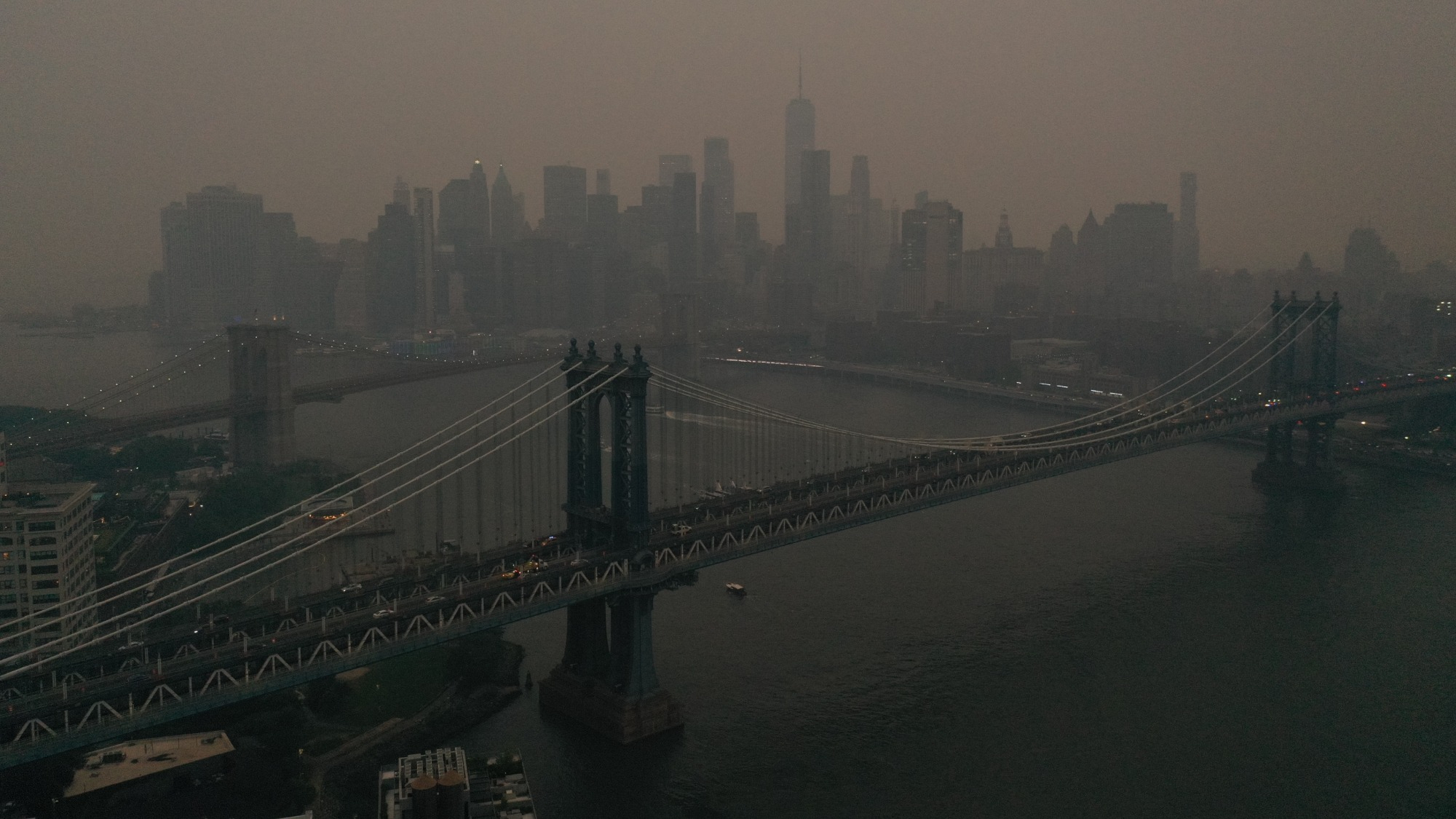

The dangerous smoke from more than 100 wildfires burning in Quebec, Canada is drifting south into the United States. The smog can cause burning eyes and headaches, making it dangerous to go outside, particularly for those with asthma and heart diseases.
[Related: Here’s exactly how wildfires are polluting our air.]
New York City had the worst air quality of any major metropolitan area late last night on Tuesday June 6, according to IQAIR. The city has since dropped to second place in terms of air pollution in the world following New Delhi, India.
Early on Wednesday June 7, New York City’s air quality was considered “very unhealthy,” according to the US Air Quality Index. This metric is maintained by the US Environmental Protection Agency (EPA) and New York City’s AQI was 226 out of a maximum of over 300. The EPA characterizes this level as Code Purple, which means elevated health risk for all groups.
In a health advisory, NYC officials urged at-risk residents to wear high-quality masks outdoors and try to stay indoors.
“If you are an older adult or have heart or breathing problems and need to be outside, wear a high-quality mask (e.g. N95 or KN95),” the office of Mayor Eric Adams said in a statement.
“Currently, we are taking precautions out of an abundance of caution to protect New Yorkers’ health until we are able to get a better sense of future air quality reports,” Adams said.
Nearly 100 million people across numerous states are affected by the dangerous conditions, with sunrises turning red under gray skies. The smoke is expected to continue with air quality alerts issued for New Jersey, Connecticut, Massachusetts, Rhode Island, Vermont, New Hampshire and as far south as Washington DC and North Carolina.
This fire season is shaping up to be among the worst in Canadian history, and the province of Quebec is seeking international support to help fight the fires. With 480 wilderness firefighters on the ground, Quebec can fight around 30 fires, Quebec Premier François Legault told the Associated Press on June 5. Usually, he said, firefighters would come from other provinces to help.
“When I talk to the premiers of other provinces, they have their hands full,” Legault said in a press briefing in Quebec City.

Wildfire smoke has very tiny particulate matter, or PM2.5. This is an extremely small pollutant, but is the most dangerous. It can travel deep into lung tissue and enter the bloodstream. In addition to wildfires, tiny particulate matter comes from sources like dust storms and the combustion of fossil fuels. Studies have linked it to numerous health problems including heart diseases, asthma, and other respiratory illnesses.
The World Health Organization (WHO) estimates that around 4.2 million premature deaths were associated with fine particulate matter in 2016. The concentration of PM2.5 in NYC was over 10 times the guideline set by the WHO.
[Related: Less ice in the Arctic could mean more wildfires in the US.]
“If you can see or smell smoke, know that you’re being exposed,” William Barrett, the national senior director of clean air advocacy with the American Lung Association told CNN. “And it’s important that you do everything you can to remain indoors during those high, high pollution episodes, and it’s really important to keep an eye on your health or any development of symptoms.”
To live with wildfire smoke, experts suggest learning how to check and monitor air quality early and often, in addition to closing windows, using air filtration if possible, and keeping pets indoors. It is also feasible to build your own air purifier for as low as $30.
